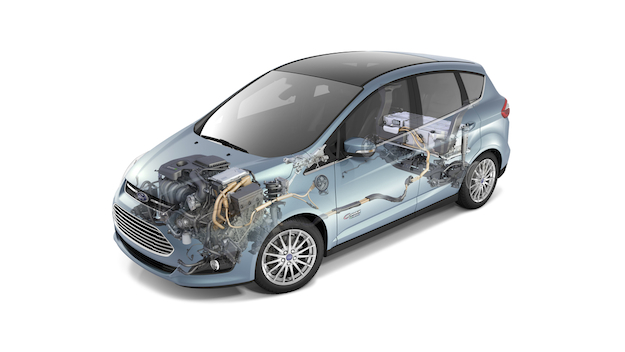
Ford knows hybrid and plug-in hybrid owners want to spend the greatest possible amount of time driving in EV (electric-only) mode, leaving the gasoline engine at rest for as long as possible. Not only is an extended EV mode both eco-friendly, it also makes the most of the energy stored in the on-board batteries and saves on gasoline.
Eager to accommodate eco-minded customers and further separate itself from the competition, two Ford engineers developed a way to use GPS signals, allowing C-MAX Energi (plug-in hybrid) and Fusion Energi to remain in EV for extended periods of time.
Virtually everyone has a daily routine: driving from home to work in the mornings and from work to pick up the kids at school in the afternoon, then stopping by the store before finally heading home. What if, Ford engineers wondered, your car could recognize your familiar stomping grounds and extend your EV range?
EV+ works by cleverly harnessing the already built-in GPS unit included within each Ford model fitted with Sync. Ford uses the SmartGauge app, which is standard on all Ford plug-in hybrids, to determine if the vehicle is near (within an 1/8th of a mile) a frequently visited location. When the system recognizes a frequently visited location, it will leave the gasoline engine off, ignite the EV+ light on the dashboard so the driver knows the system has been engaged, and squeeze what it can out of the remaining on-board battery power.
Ford hasn’t divulged exactly how the EV+ works, but from what we can gather, the system limits throttle response thereby drawing less juice and prolonging the electric driving range. This in turn allows the batteries to drain down more readily than they normally would, assuming you will soon be home and able to charge it up.
For customers who find the idea of their vehicle actively tracking and interacting with their daily routine a bit unsettling, the EV+ system memory can be erased with the push of a button or fully disabled.
While the system is downright ingenious and will certainly save countless numbers of gallons of gas for drivers each year, we wonder what the added stress on the battery packs will be. If the system is normally designed to shutdown and revert to a standard gas/electric drive mode at a given level of remaining battery charge, what will be the outcome of drawing more power from the battery pack?
In spite of our skepticism, we’re pleased to see Ford using big-bother technologies to improve fuel economy, even if it seems a bit weird at the outset.
Editors' Recommendations
- Rivian R2 vs. Ford Mustang Mach-E: Will the R2 be a better buy?
- 5 impressive EVs you’ll wish you could buy in the U.S.
- Check out the NASA EV that will drive Artemis crew (partway) to the moon
- Rivian R1S vs. Kia EV9: Is the more expensive electric SUV really better?
- These new NASA EVs will drive astronauts part way to the moon (sort of)


